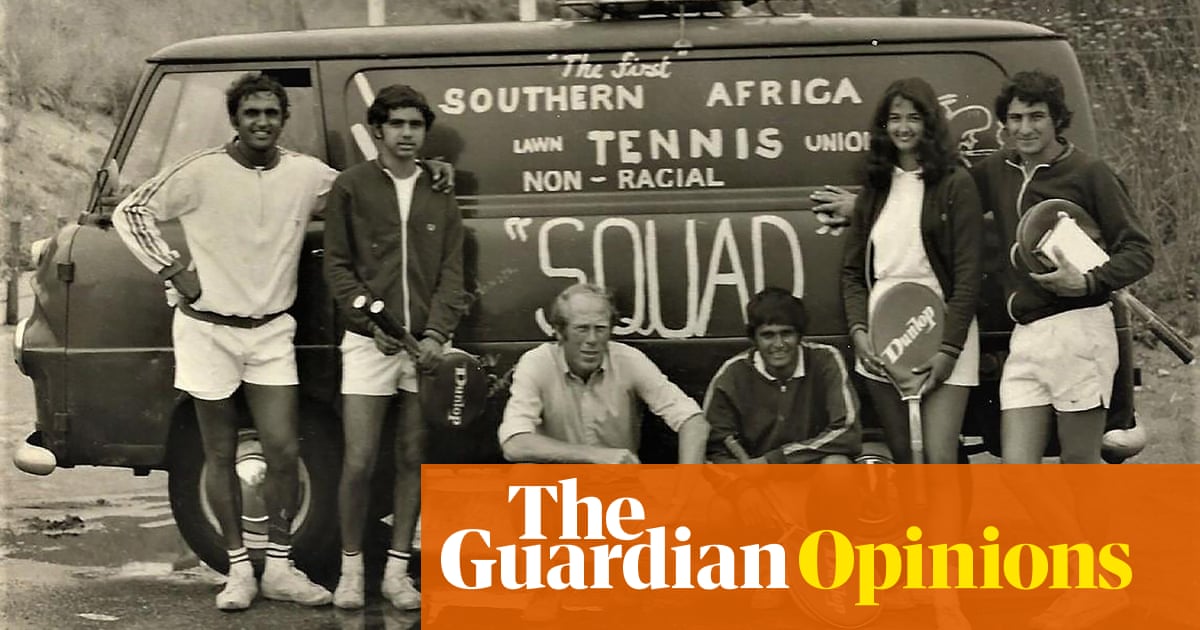Wimbledon once helped to stop a black player from competing. Such injustice has never been recogn... - 5 minutes read

Today, the All England Lawn Tennis Club, hosts of the famous Wimbledon Championships, pledges to be diverse and inclusive. But in 1971 an 18-year-old university student from Durban, Hoosen Bobat, was excluded from becoming the first black South African to play in the Wimbledon men’s junior tournament. This was due to apartheid, and the collusion of the all-white tennis union in South Africa and the International Lawn Tennis Federation, with Wimbledon toeing the line.
As a scholar who has published books and papers on the histories of black exclusion and black resistance during apartheid, and on social justice and transformation, I tell Bobat’s story in Tennis, Apartheid and Social Justice. The book documents the 1971 first international tour by a squad of black South Africans who played under the auspices of the non-racial Southern African Lawn Tennis Union.
In 1973, the union was a founding affiliate of the South African Council on Sport, which popularised the slogan: “No normal sport in an abnormal society”
The 1971 players were dubbed the “Dhiraj squad” after tennis champion Jasmat Dhiraj, a school teacher. The other five were Hira Dhiraj, Alwyn Solomon, Oscar Woodman, Cavan Bergman and Bobat.
The union’s goals were for its most promising players to compete in Europe irrespective of “race” and nationality, to improve their games and be ambassadors for equity and human dignity in sport.
Hoosen Bobat from Durban hoped to become the first black South African to compete in the men’s junior tournament at Wimbledon. Photograph: Hoosen BobatI wrote the book because I believe important social justice issues arose from the tour. At a minimum, a public apology is due from the international tennis body and Wimbledon to the non-racial sport community, the 1971 tour players and Bobat.
It was important for the story to be told while most of those who lived it were still with us. It was an opportunity to focus on “ordinary” people, on unsung heroes, on their tribulations and triumphs. A focus on everyday histories rather than on dramatic events and on elites.
I place the tour within the political, social and sporting conditions under apartheid. In 1971 South Africa was a racist, segregated and repressive society, based on white supremacy and privilege and black subjugation. Black people were denied proper sports facilities, coaching and opportunities to excel, could not belong to the same clubs as whites or compete with or against white players. Considered subjects, not citizens, they couldn’t represent South Africa in sport. Sport under apartheid was a killing field of ambitions and dreams.
This records the players, their tournaments, performances and challenges, the tour’s impact on them, the lessons learned and their lives and tennis accomplishments after 1971.
But my research also shows the collusion between the International Lawn Tennis Federation and the white South African tennis body. That, and the action of the All England Lawn Tennis Club, prevented Bobat from becoming the first black South African to play in the junior Wimbledon championships.
Since democracy in 1994, there has been no recognition … of outstanding apartheid-era non-racial tennis playersSince democracy in 1994, there has been no recognition, symbolic or material, of outstanding apartheid-era non-racial tennis players. Nor has there been restitution and reparation of any kind.
Yet apartheid’s legacy continues to profoundly affect and shape tennis today. A walk around the affluent white town of Stellenbosch in the Western Cape province and a black township like KwaMashu near Durban reveals the stark differences in terms of tennis courts and coaching.
It’s probable that less tennis is played today in black schools and communities than before democracy. Certainly, there is less self-organisation of the kind that harnessed limited economic and social capital in black communities to ensure non-racial tennis.
As in other areas of South African society, there has been much talk about “transformation” in tennis but little substantive change. I argue that there should have been a Truth and Reconciliation Commission for sport that laid bare the apartheid crimes, the perpetrators and collaborators, and forged agreement on reparations and transformation.
Those collaborators included big business and media. The South African sugar industry supported the tennis Sugar Circuit as it became the “breeding ground for world-ranked (white South African) players”. The sugar industry was built on the blood and sweat of black labour and of Indian indentured labour.
It did little to support black players. The commercial media linked to big business were also complicit, devoting print and airtime principally to white sports. Opportunities in tennis were profoundly shaped by class, racism, patriarchy and other factors.
The players in the 1971 tour were classified as “coloured” or “Indian”. There were no “Black” South African players chosen because of a debatable notion of “merit” used by the Southern African Lawn Tennis Union.
Dhiraj told me how he had to “overcome inhibitions and complexes” on tour. Bobat talks of battling the so-called inferiority complex of playing against white tennis players.
The then South African president, Nelson Mandela, said in 1995: “We can now deal with our past, establish the truth which has so long been denied us, and lay the basis for genuine reconciliation. Only the truth can put the past to rest.”
In my view, however, instead of dealing with our history South Africans are letting it fester, failing to see that genuine reconciliation cannot be achieved by ignoring the injustices and pain.
Saleem Badat is a research professor at the University of the Free State in South Africa. A version of this article was first published in the Conversation Africa editionSource: The Guardian
Powered by NewsAPI.org